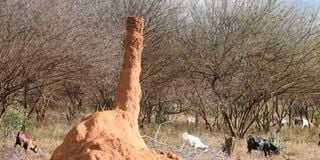Premium
A catalogue of Kenya's Neglected Tropical Diseases

What you need to know:
- Kenya, in 2011, became the first country in Africa to launch a national strategic plan that would help in bringing to the limelight neglected tropical diseases, which had become a public health concern at the time.
- So far, two five-year strategic plans have been drafted and the last one was in 2016 running through to 2021.
For a disease to be classified as neglected, the abandonment must have been so glaring yet the afflicted continued to suffer in silence.
In 2003, American scientist Peter Hotez and his colleagues coined the phrase neglected tropical diseases (NTDs). At the time all the attention had been on malaria, tuberculosis and HIV/Aids. There was little or no funding directed to NTDs.
Also, some of the NTDs had been eradicated or the cases had gone down, and because of their nature of affecting people in the tropical and subtropical climatic zones, they were not in the scientists’ radar.
In fact, the diseases are likely to be found in rural areas and in urban settings whose public health is not up to par.
The World Health Organization (WHO) defines NTDs as viral, parasitic and bacterial diseases that mainly affect the world’s poorest people.
The WHO also says that an estimate of about one billion people are infected with NTDs globally and another one billion at risk of getting an infection.
Kenya, in 2011, became the first country in Africa to launch a national strategic plan that would help in bringing to the limelight neglected tropical diseases, which had become a public health concern at the time.
So far, two five-year strategic plans have been drafted and the last one was in 2016 running through to 2021.
Some of the common NTDs in the country are bilharzia, trachoma, kala-azar, intestinal worms, elephantiasis, chikungunya, leprosy and cutaneous leishmaniasis.
“Beyond their negative impact on health, NTDs contribute to an ongoing cycle of poverty and stigma that leaves people unable to work, go to school or participate fully in family and/or community life,” explains the Kenya Medical Research Institute, which has a unit dedicated to NTDs.
Every January 30, the world marks the Neglected Tropical Diseases Day to raise awareness on the impact of the diseases on people’s health and strategies to enhance global access to interventions for prevention, control, elimination and eradication.
In this series, Healthy Nation looks at some of the Neglected Tropical Diseases across the country.
This report is produced in partnership with the African Investigative Journalism Conference, an initiative of the Journalism Department at the University of Witwatersrand in South Africa, and the Nation Media Group.




